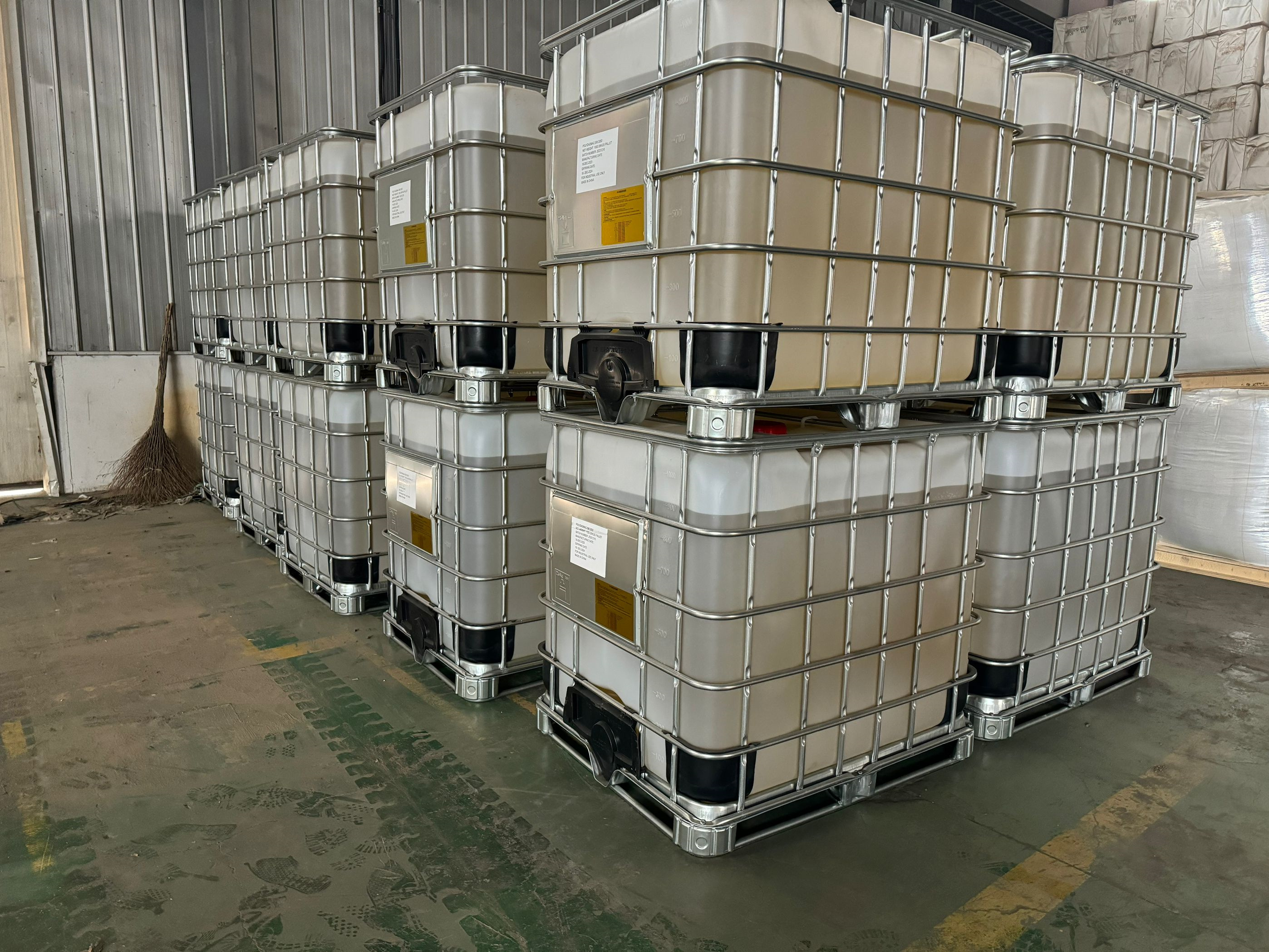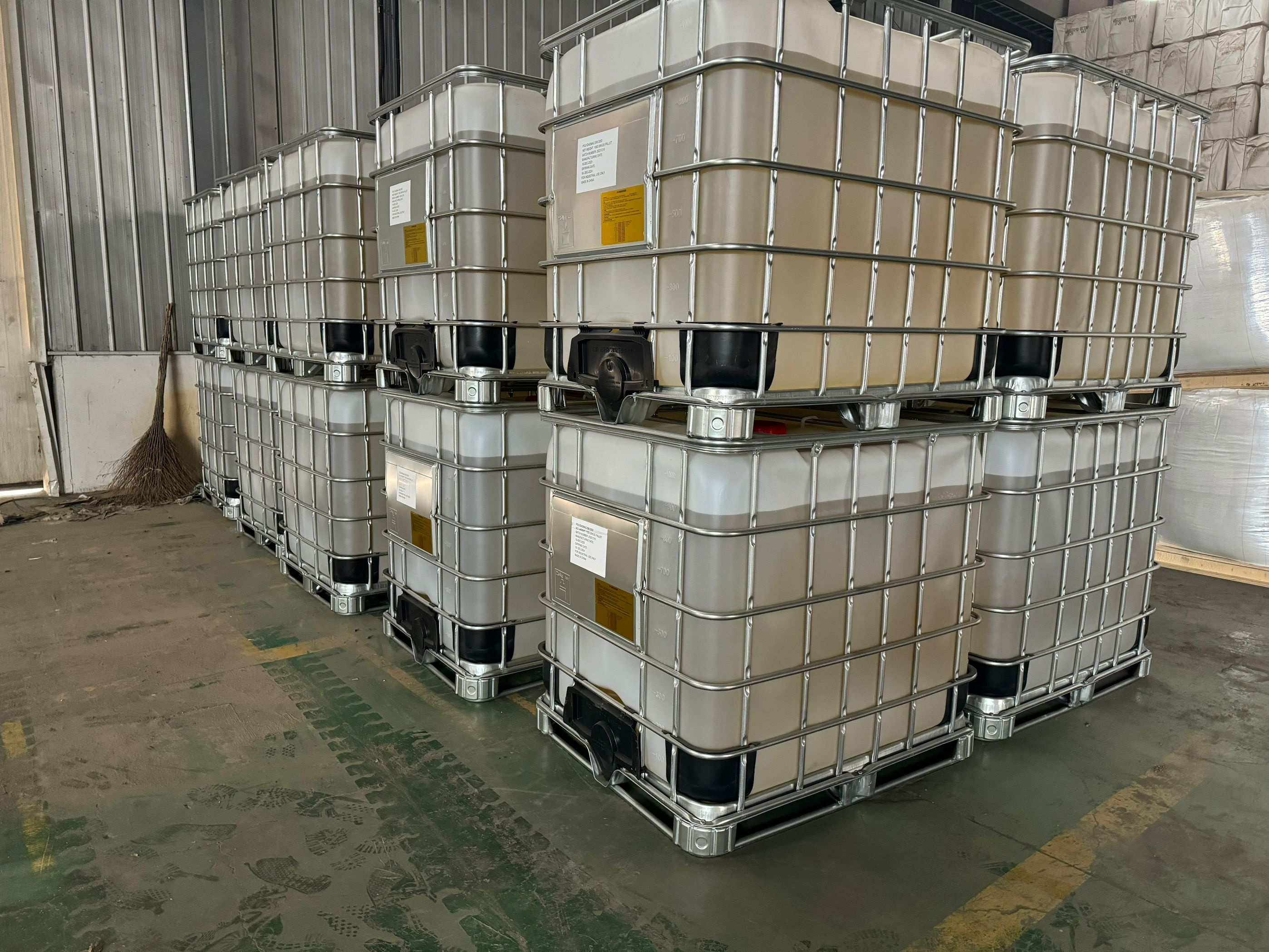PolyDADMAC (Poly(diallyldimethylammonium chloride)) with a concentration of 40% and viscosity in the range of 1000–3000 cP is a widely used cationic polymer with a variety of industrial applications. Its key characteristics include high cationic charge density, water solubility, and pH stability, making it a highly effective coagulant and flocculant. This specific formulation (40% content and 1000–3000 cP viscosity) is particularly suited for applications requiring efficient charge neutralization and robust particle aggregation in both water treatment and industrial processes.
Key Properties of PolyDADMAC (40% Content, 1000–3000 cP Viscosity)
High Charge Density: The quaternary ammonium groups in PolyDADMAC provide a strong positive charge, enabling it to neutralize negatively charged particles and colloids effectively.
Optimal Viscosity: The viscosity range of 1000–3000 cP indicates a medium-viscosity polymer that balances ease of handling with high flocculation performance.
Water Solubility: The polymer dissolves readily in water, allowing for uniform distribution in treatment processes.
Broad pH Stability: It performs effectively across a wide pH range, offering versatility in different water and industrial conditions.
Applications of PolyDADMAC
1. Water Treatment
PolyDADMAC is a vital coagulant and flocculant in municipal and industrial water treatment processes.
a. Coagulation and Flocculation
Mechanism: PolyDADMAC neutralizes the negative charges of particles, destabilizing colloidal suspensions. This facilitates the aggregation of fine particles into larger flocs that settle more easily or can be removed by filtration.
Applications:
Municipal Drinking Water Treatment: Used to clarify raw water by removing turbidity, clay, silt, and organic matter.
Wastewater Treatment: Treats industrial wastewater by removing suspended solids, oils, and other contaminants.
b. Organic Contaminant Removal
Mechanism: PolyDADMAC binds with dissolved organic compounds (e.g., humic and fulvic acids) to reduce color and disinfection by-product (DBP) precursors.
Applications:
Color Reduction: Effective in removing natural organic matter that causes coloration in raw water.
DBP Control: Reduces the formation of harmful DBPs during chlorination in drinking water treatment.
c. Sludge Dewatering
Mechanism: Improves the structure and density of flocs, enhancing water removal during sludge dewatering processes.
Applications:
Sludge Volume Reduction: Minimizes the volume of sludge, reducing disposal costs.
Enhanced Dewatering: Improves the efficiency of belt presses, centrifuges, and other dewatering equipment.
d. Compatibility with Other Coagulants
Mechanism: PolyDADMAC can be used as a standalone coagulant or as a coagulant aid with aluminum-based or iron-based coagulants, reducing chemical usage and improving performance.
Applications:
Combined Coagulation Systems: Optimizes sedimentation and filtration in complex water treatment schemes.
2. Oil and Gas Industry
PolyDADMAC is extensively used in the oil and gas sector for treating water and separating oil-water emulsions.
a. Produced Water Treatment
Mechanism: PolyDADMAC destabilizes oil droplets in produced water, promoting their aggregation and separation from water.
Applications:
Oil-Water Separation: Treats produced water from oil extraction processes, allowing for reuse or safe discharge.
b. Drilling Fluid Clarification
Mechanism: Removes suspended solids and stabilizes the drilling fluid by neutralizing negatively charged particles.
Applications:
Drilling Operations: Enhances the quality of drilling fluids by removing impurities.
3. Textile Industry
In the textile industry, PolyDADMAC is widely used for dyeing, finishing, and wastewater treatment.
a. Dye Fixation
Mechanism: PolyDADMAC acts as a dye-fixing agent by binding to anionic dyes, improving their adherence to fibers and enhancing colorfastness.
Applications:
Dyeing Processes: Ensures that reactive, direct, and acid dyes adhere well to natural and synthetic fibers.
Enhanced Wash Fastness: Reduces dye bleeding during washing.
b. Wastewater Treatment
Mechanism: Neutralizes charged dye molecules and removes suspended solids from textile effluents.
Applications:
Effluent Treatment Plants: Reduces color and chemical oxygen demand (COD) in wastewater discharged from dyeing and printing operations.
4. Paper and Pulp Industry
PolyDADMAC is a key additive in paper manufacturing and wastewater treatment within the pulp and paper industry.
a. Retention and Drainage Aid
Mechanism: Improves the retention of fine particles and fillers in the paper matrix, enhancing sheet formation and water drainage.
Applications:
Papermaking Processes: Used to retain valuable fibers and fillers during sheet formation, improving product quality.
b. Color and Effluent Treatment
Mechanism: Removes color and organic contaminants from effluents generated during pulping and paper production.
Applications:
Wastewater Treatment: Reduces the environmental impact of paper mill effluents by treating colored and organic-rich wastewater.
5. Mining and Mineral Processing
PolyDADMAC is utilized in mining operations for solid-liquid separation and water reuse.
a. Tailings Treatment
Mechanism: Enhances the settling of fine particles in tailings, improving water clarity and recovery.
Applications:
Mine Wastewater Treatment: Facilitates water reuse in mining operations.
b. Thickening and Dewatering
Mechanism: Aggregates fine particles in mineral slurries, making dewatering processes more efficient.
Applications:
Thickener Operations: Improves the recovery of process water from mining slurries.
6. Cosmetic and Personal Care Industry
PolyDADMAC is used as a conditioning agent in personal care products due to its cationic nature.
a. Hair Care Products
Mechanism: Binds to negatively charged hair strands, improving manageability and reducing static.
Applications:
Shampoos and Conditioners: Enhances smoothness and reduces frizz.
b. Skin Care Products
Mechanism: Forms a protective film on the skin, enhancing moisture retention.
Applications:
Moisturizers and Lotions: Provides a smooth feel and enhances hydration.
Advantages of PolyDADMAC (40% Content, 1000–3000 cP Viscosity)
High Efficiency: Works effectively at low dosages, reducing chemical costs.
Versatility: Applicable across diverse industries and compatible with various processes.
Broad pH Tolerance: Effective in both acidic and alkaline environments.
Reduced Sludge Production: Minimizes sludge volume, lowering disposal and handling costs.
Environmental Benefits: Reduces pollutants in effluents, helping industries meet stringent discharge regulations.
Conclusion
PolyDADMAC with 40% content and 1000–3000 cP viscosity is a versatile and efficient polymer used in various industries for its coagulation, flocculation, and charge neutralization properties. Its primary applications span water treatment, oil and gas operations, textile processing, paper manufacturing, mining, and even personal care. The polymer’s ability to improve process efficiency, reduce chemical usage, and enhance product quality makes it an indispensable tool across industries. As environmental regulations tighten and industries prioritize sustainability, the role of PolyDADMAC in optimizing processes and ensuring compliance will continue to grow.






